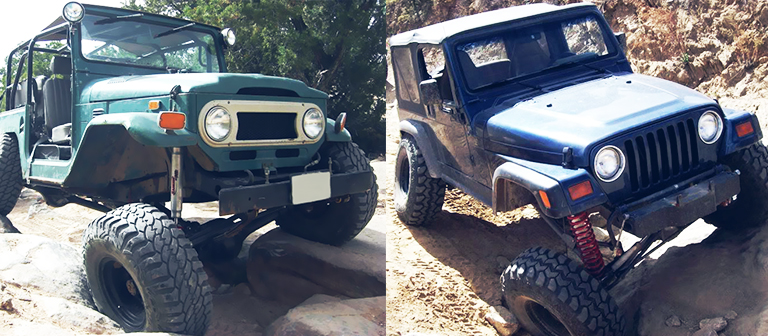
By definition, a suspension system is a system of springs, shock absorbers, and linkages that connect a vehicle to its wheels and allow relative motion between the two. Suspension systems are responsible for a vehicle’s handling and braking for safety. A suspension system is responsible for keeping the vehicle occupants comfortable and to deliver a ride quality reasonably well isolated from vibrations caused by bad or uneven road conditions. The suspension system protects the vehicle and any cargo or luggage from damage.
There are a variety of independent suspension systems, however, this blog will primarily focus on two fundamental types of passive suspension systems; Spring Suspension System and Dampener Suspension System.
- Spring Suspension System: A spring is an energy storage system. There are two types of springs used under this category.
01-COIL-SPRING-IN-SUSPENSION-SYSTEM-COIL-SPRING-APPLICATIONS
i] Coil Spring: A coil spring, also known as a helical spring, is a mechanical device which is typically used to store energy and subsequently release it, to absorb shock, or to maintain a force between contacting surfaces. They are made of an elastic material formed into the shape of a helix which returns to its natural length when unloaded. Under tension or compression, the material (wire) of a coil spring undergoes torsion. The spring characteristics, therefore, depend on the shear modulus, not Young’s Modulus.
However, a coil spring may also be used as a torsion spring: in this case, the spring as a whole is subjected to torsion about its helical axis. The material of the spring is thereby subjected to a bending moment, either reducing or increasing the helical radius. In this mode, it is the Young’s Modulus of the material that determines the spring characteristics. Metal coil springs are made by winding a wire around a shaped former – a cylinder is used to form cylindrical coil springs.
ii] Leaf Spring: Originally called a laminated or carriage spring, and sometimes referred to as a semi-elliptical spring or cart spring, it is one of the oldest forms of springing, dating back to medieval times. A leaf spring takes the form of a slender arc-shaped length of spring steel of rectangular cross-section.
2] Dampeners Suspension System: A damper or a shock absorber is a mechanical or hydraulic device which is designed to absorb and damp shock impulses. Pneumatic and hydraulic shock absorbers are used in conjunction with cushions and springs. An automobile shock absorber contains spring-loaded check valves and orifices to control the flow of oil through an internal piston. It does this by converting the kinetic energy of the shock into another form of energy (typically heat) which is then dissipated. In most shock absorbers, energy is converted to heat inside the viscous fluid.
In hydraulic cylinders, the hydraulic fluid heats up, while in air cylinders, the hot air is usually exhausted to the atmosphere. In other types of shock absorbers, such as electromagnetic types, the dissipated energy can be stored and used later. The shock absorbers damp out the (otherwise simple harmonic) motions of a vehicle up and down on its springs. In layman’s terms, shock absorbers help cushion vehicles on uneven roads.
The three major functions of any vehicle’s suspension are to:
- Support the vehicle
- Absorb impacts from bumps, potholes, and other road irregularities
- Allow the vehicle to turn in response to the driver’s inputs. (The steering system can be considered part of the suspension or its own system, but either way, the suspension has to allow for movement of the wheels as the vehicle turns).
Springs in general, and leaf springs in particular help perform the first two of these functions; they support the weight of the vehicle while absorbing bumps


